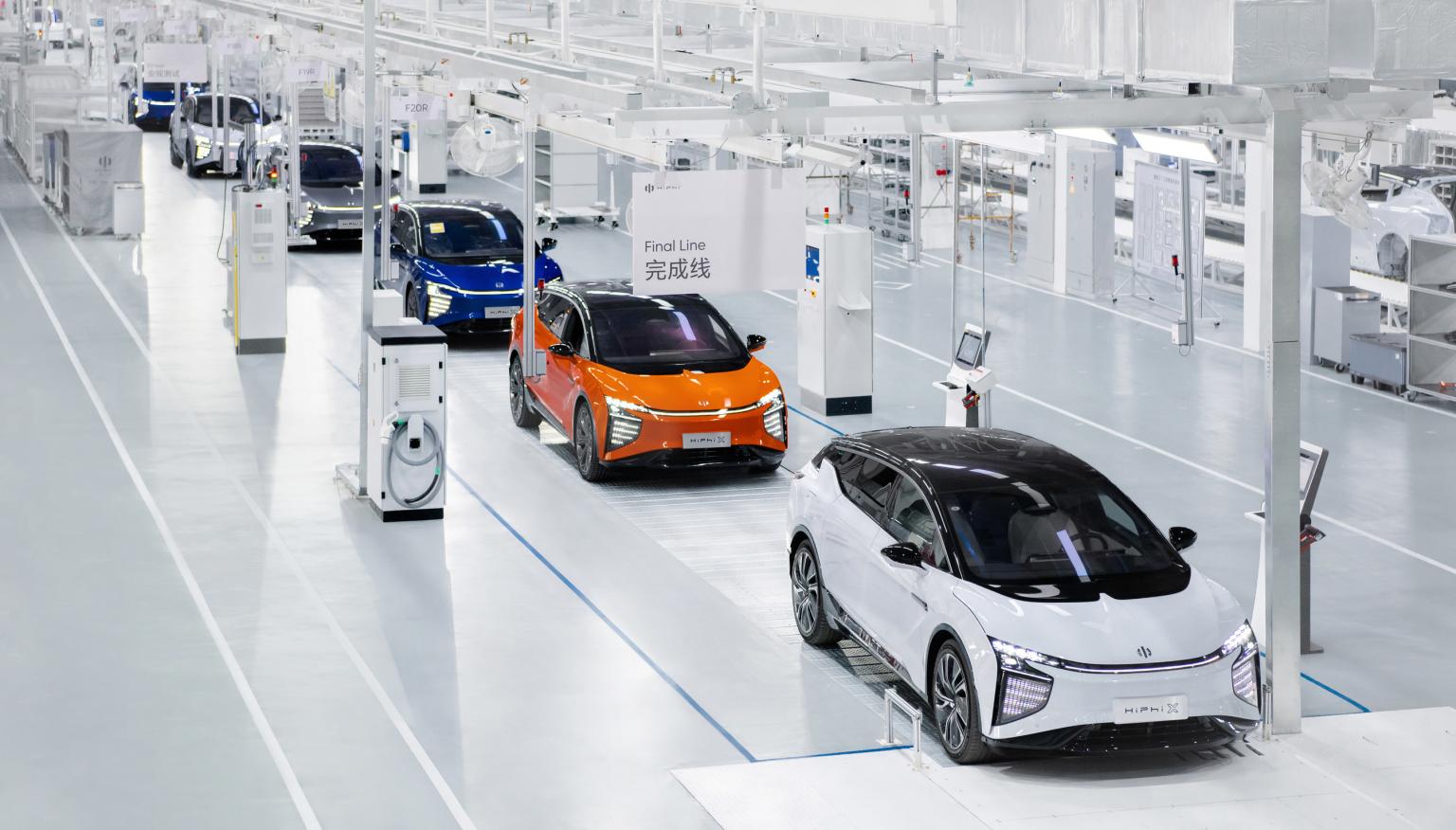
Human Horizons has shared its vision of the future of manufacturing. Housed in a repurposed petrol-powered vehicle plant in the city of Yancheng, Jiangsu province in China, the HiPhi Plaza is set to assemble the new HiPhi X SUV.
The plant is supported by hundreds of Internet of Things devices connected through 5G and organised by Manufacturing Operating Management (MOM) cloud computing software featuring a digital twin to ensure the entire operation is managed efficiently. For factory operators, the use of Advanced Planning and Optimisation (APO) on SAP’s HANA as an enterprise resource planning (ERP) enables the production scheduling of orders. It’s similar to the system Daimler and Volvo are using to increase the speed at which customised orders are processed.
In the bodyshop, assembly is entirely automated by 130 C4-interconnected Kuka robots. Painting and coating inside and out is also 100% automated using the latest generation of Dürr Group’s automatic spraying robots which apply 8 coats of paint.
The company uses China's manufacturing execution system (MES) process for assembly of the batteries and it employs big data analytics for error-monitoring, full process information traceability and quality assurance. Final assembly of the vehicle utilises an over-the-air system with a large number of 360º intelligent automated guided vehicles transport vehicles, an assisted suspension conveyor line and firmware over-the-air offline detection software using the 5G-supported cloud platform to identify and highlight any potential defects.
After production, Human Horizons’ vehicle-to-everything (V2X) collaboration technology allows the HiPhi X to drive itself off the assembly line to the designated delivery area, and park securely using the in-built Level 4 Automated Valet Parking (AVP) functionality. This is the final step in an almost entirely automated manufacturing process.
Human Horizons founder and CEO, Ding Lei said, “Like people, things are the products of their environment too. If we want to build the world’s most sophisticated new energy car, we must use the world’s most sophisticated manufacturing technologies. If we want to build a new generation of autonomous vehicles, we must use the newest generation of autonomous production machinery. If we want to create an ultra-efficient and personalised car, we must be ultra-efficient and flexible in our manufacturing process.”











